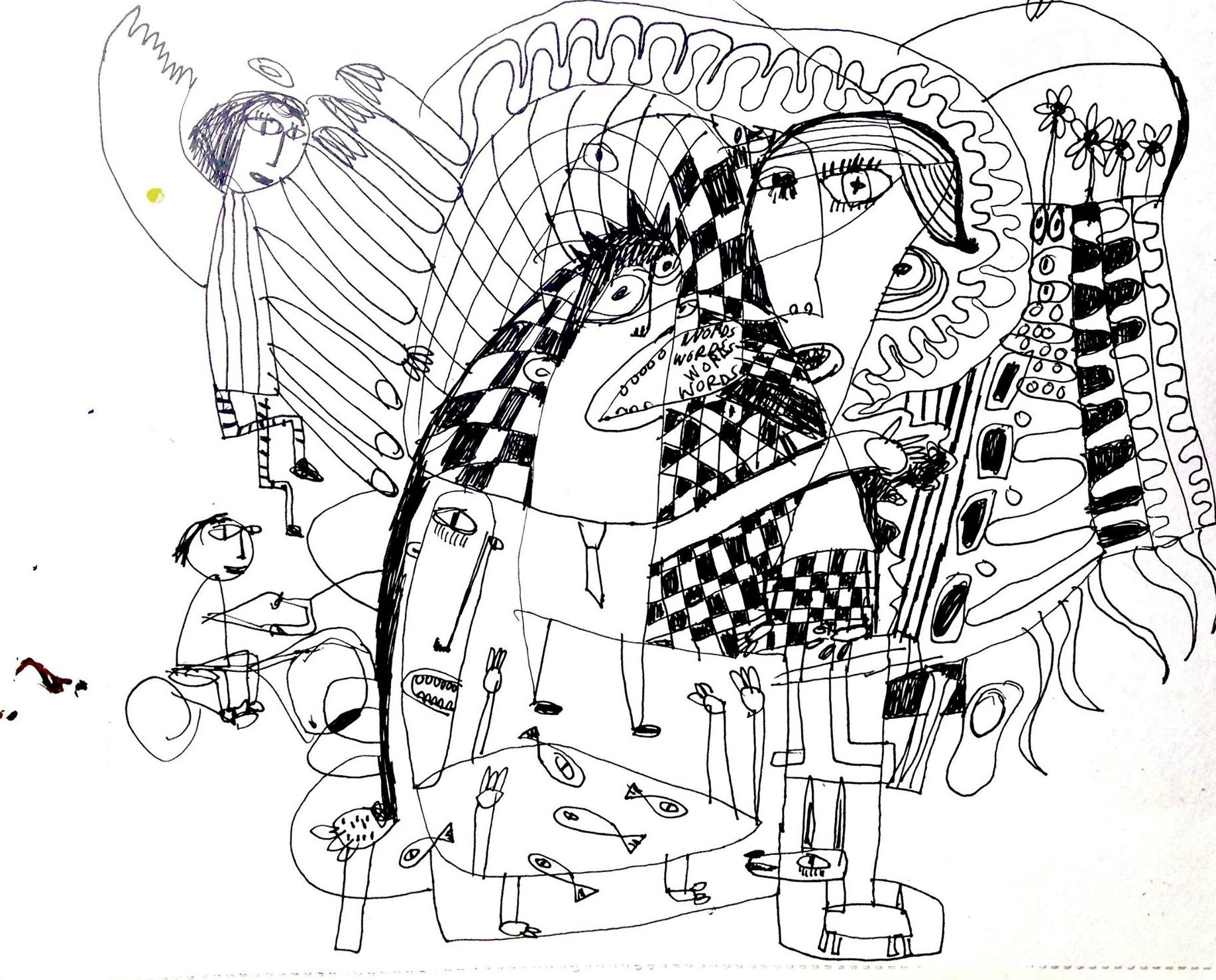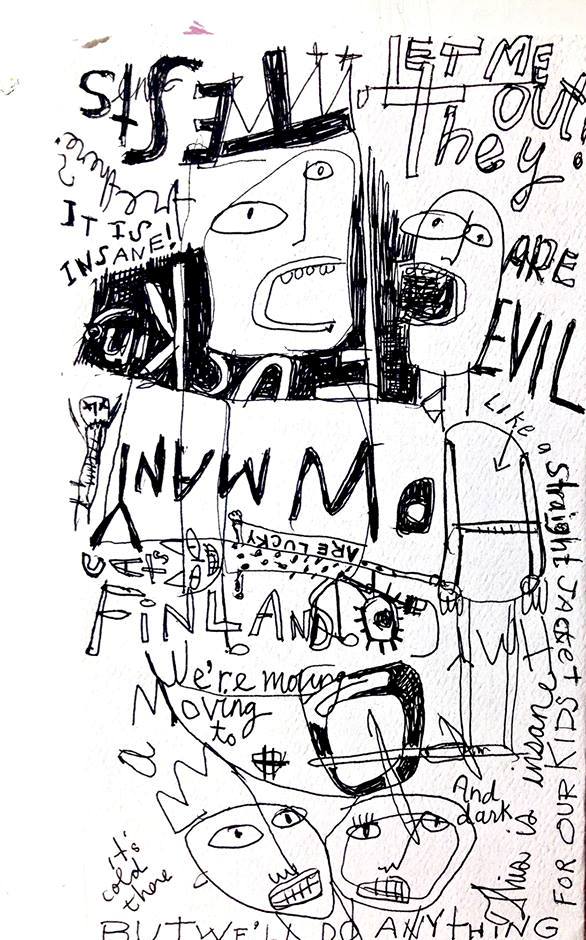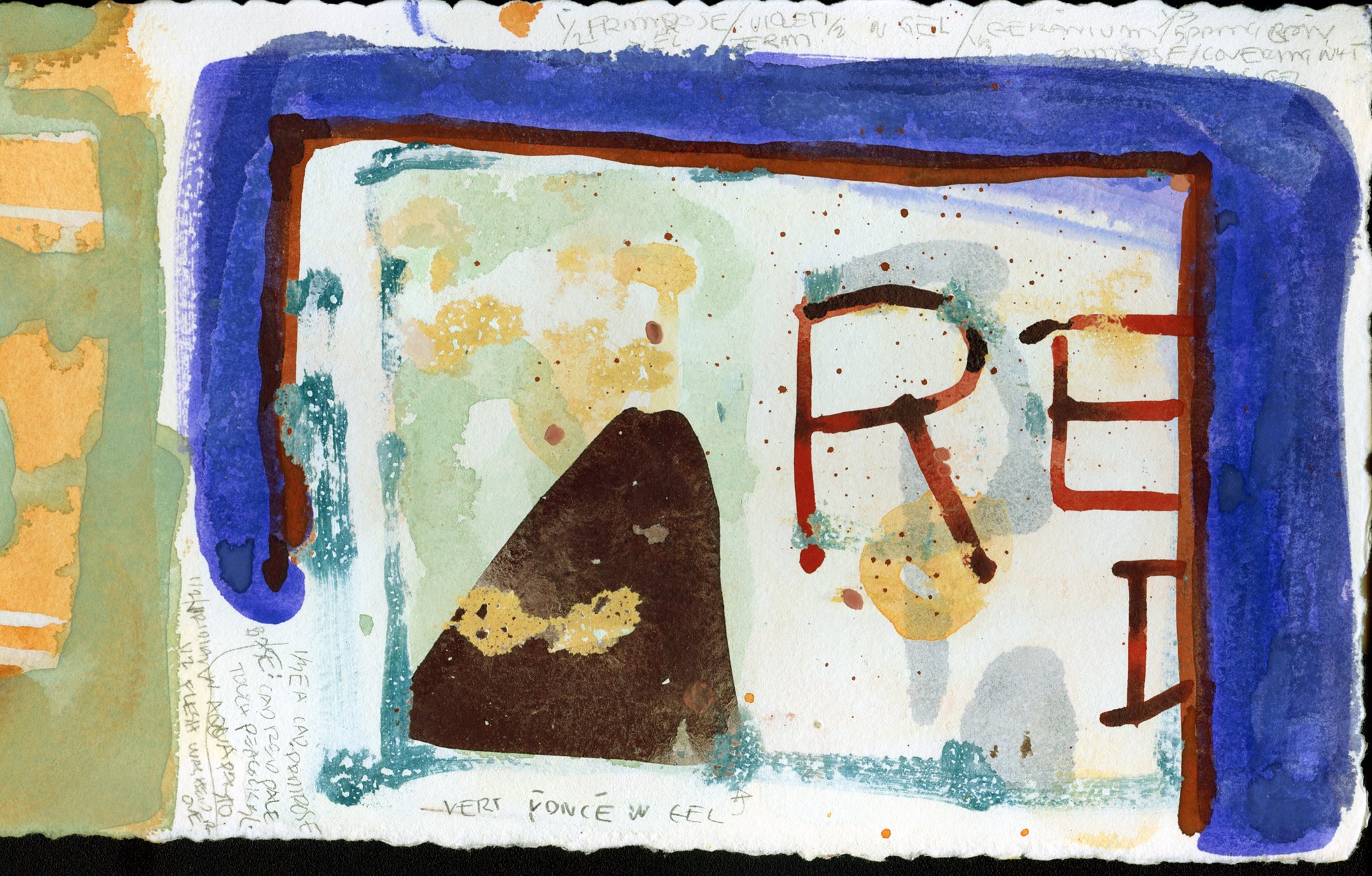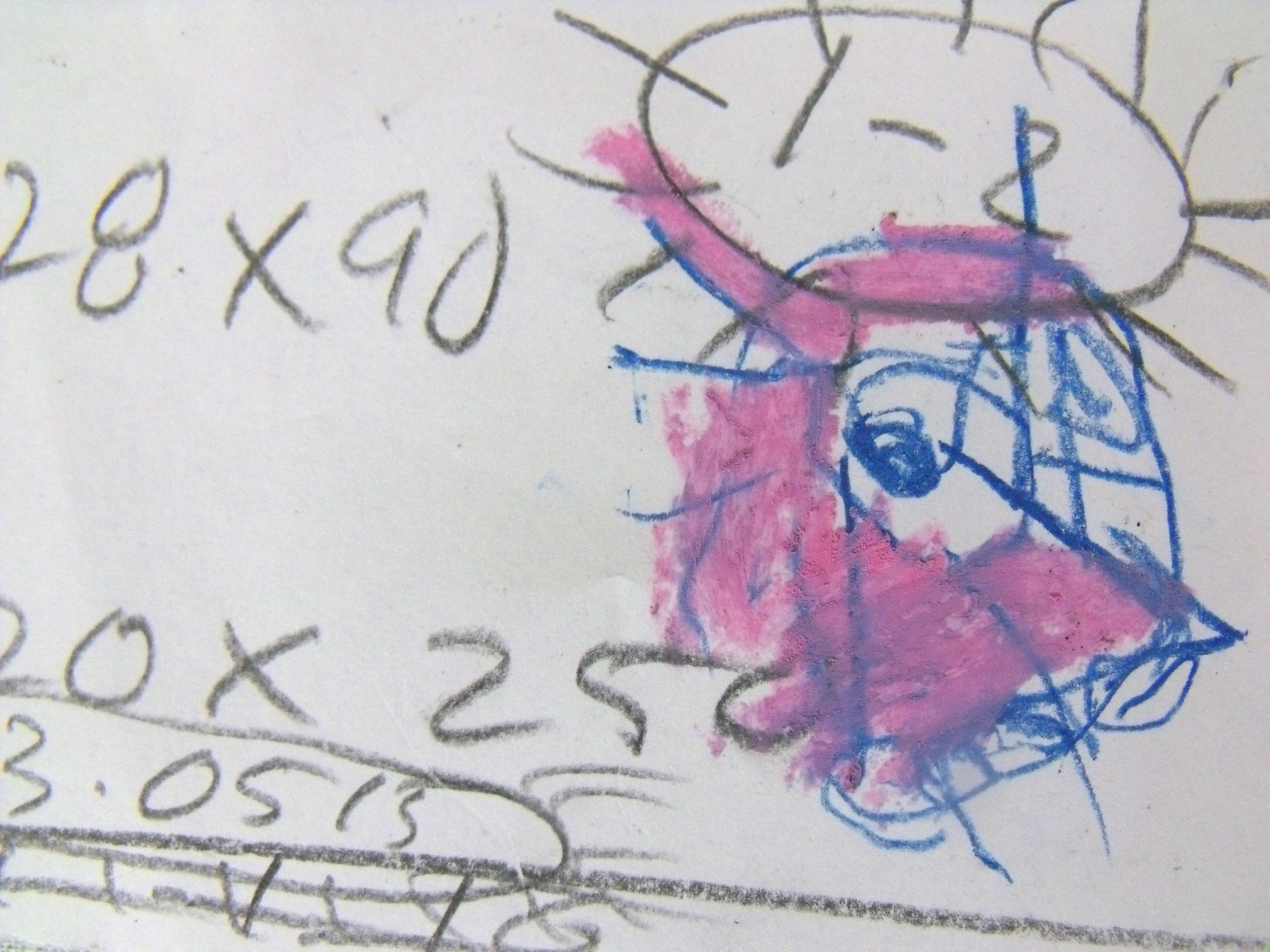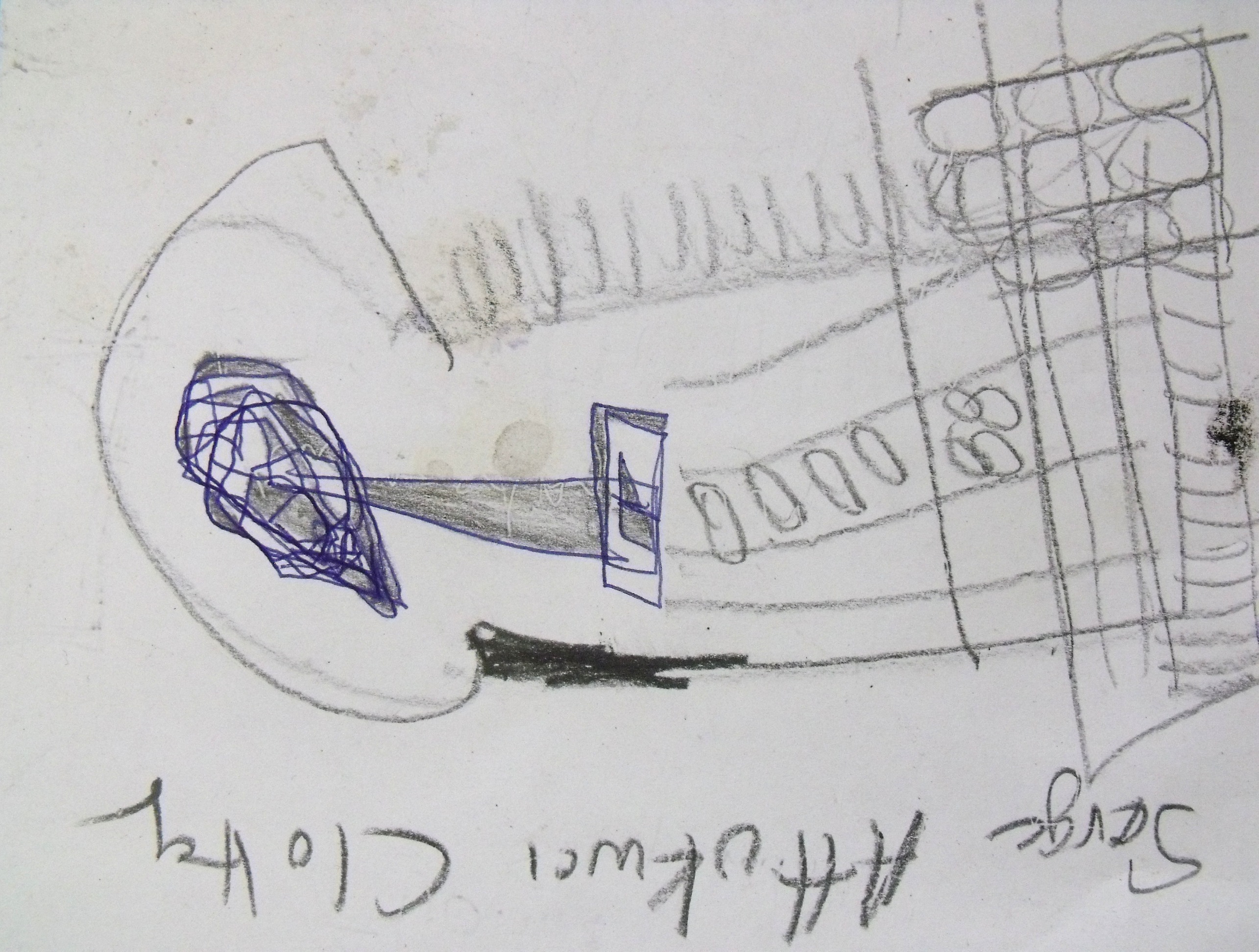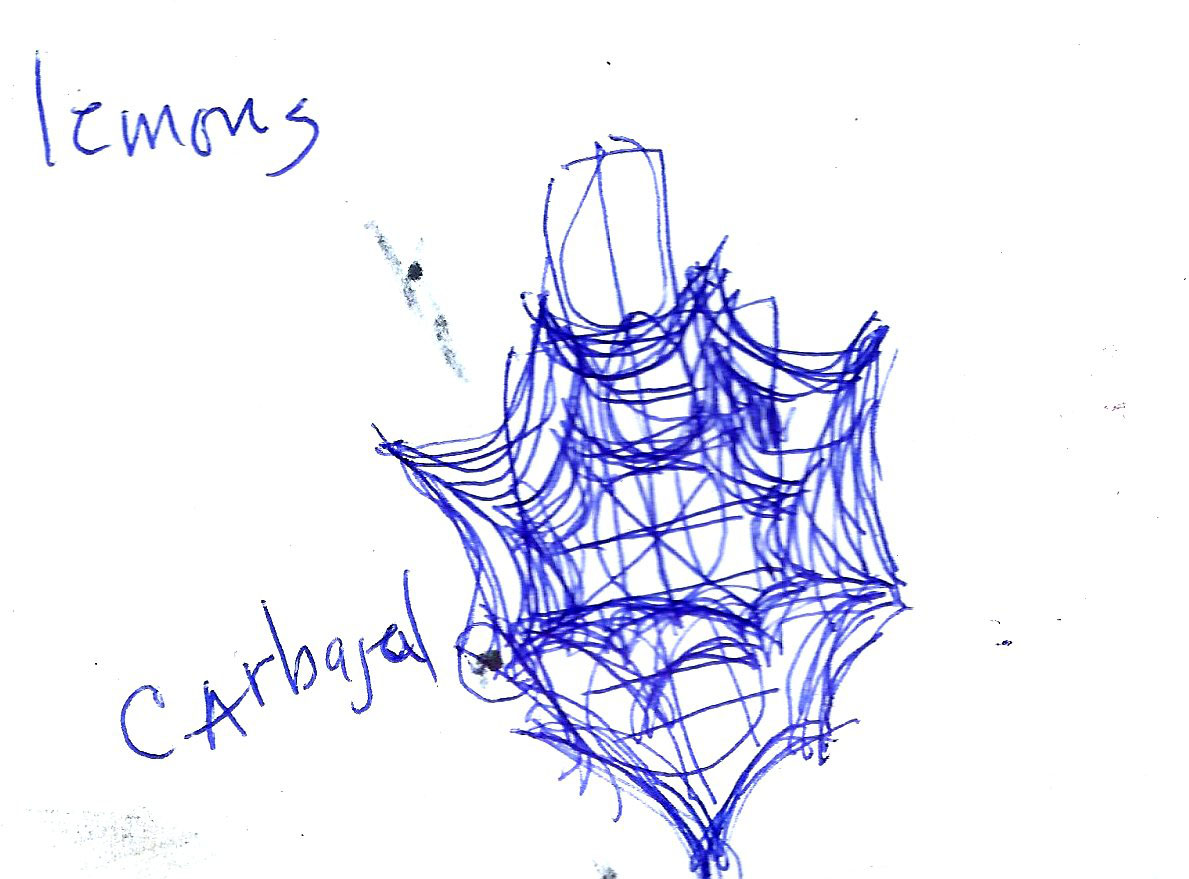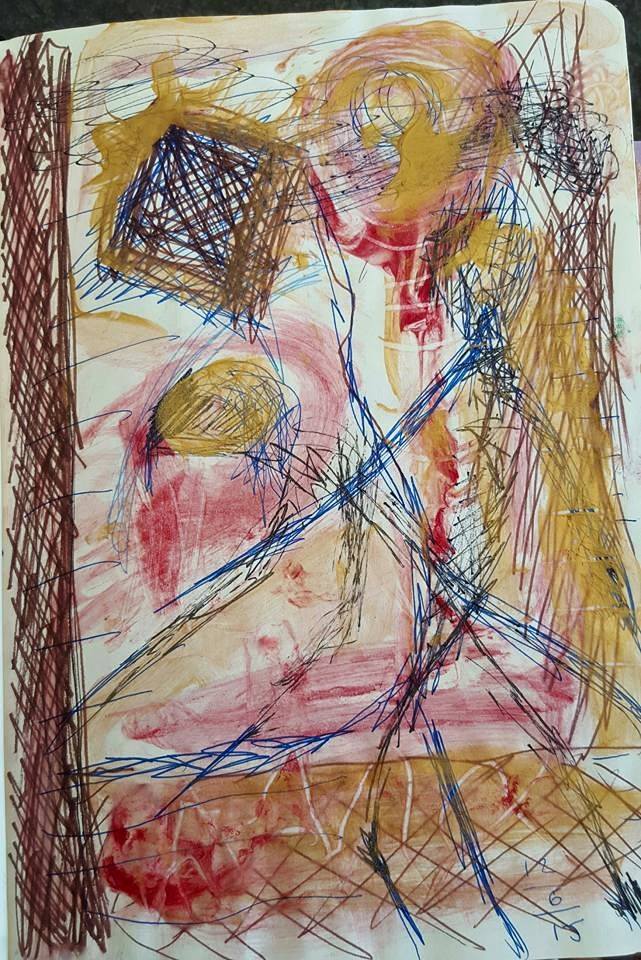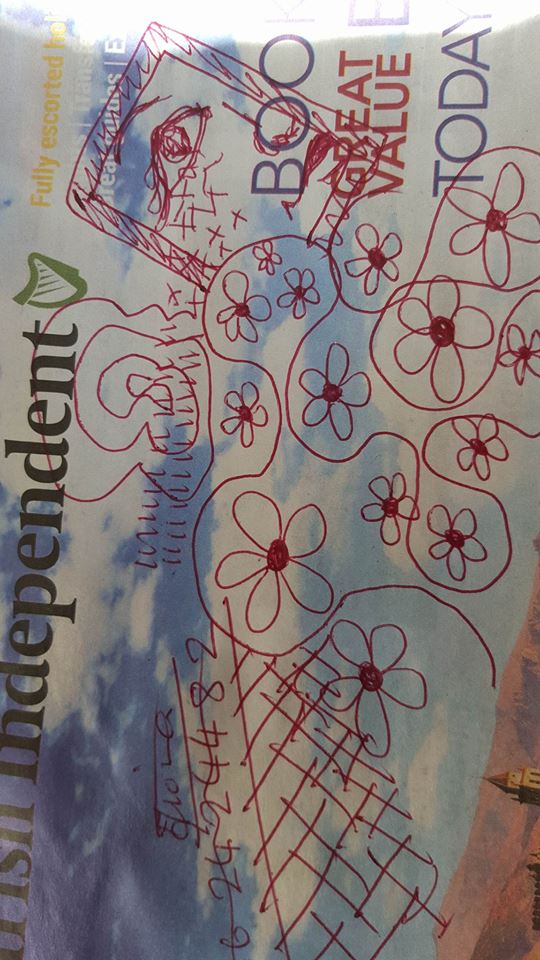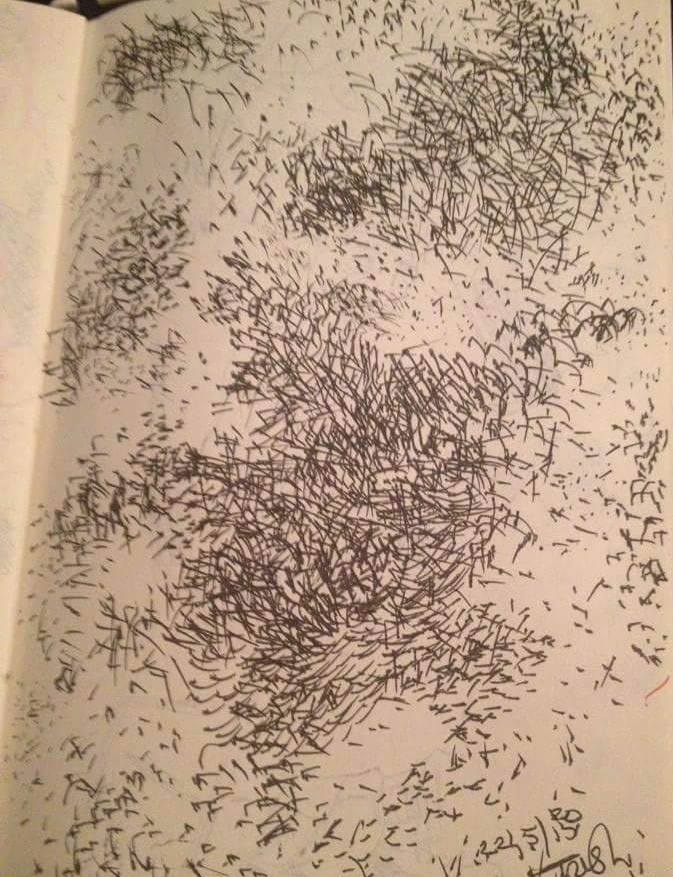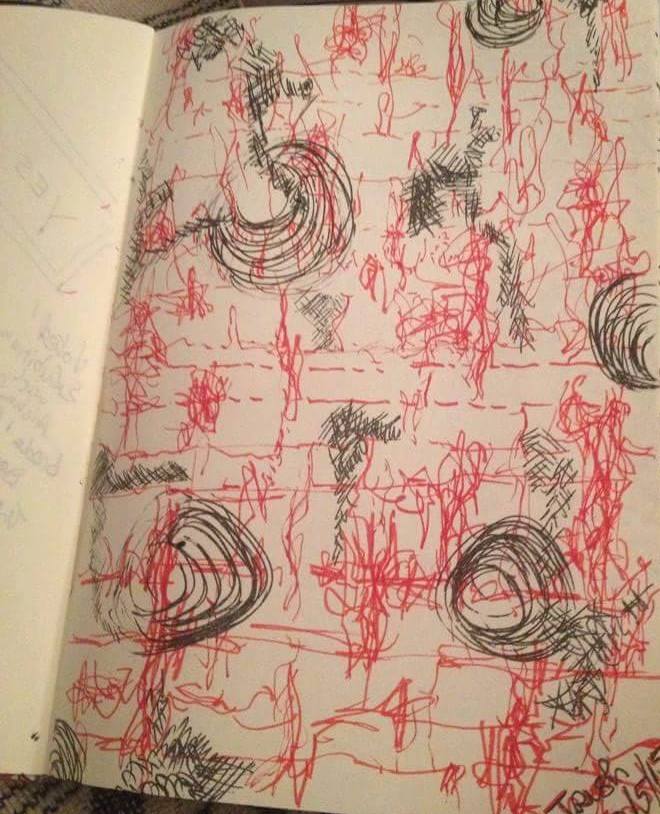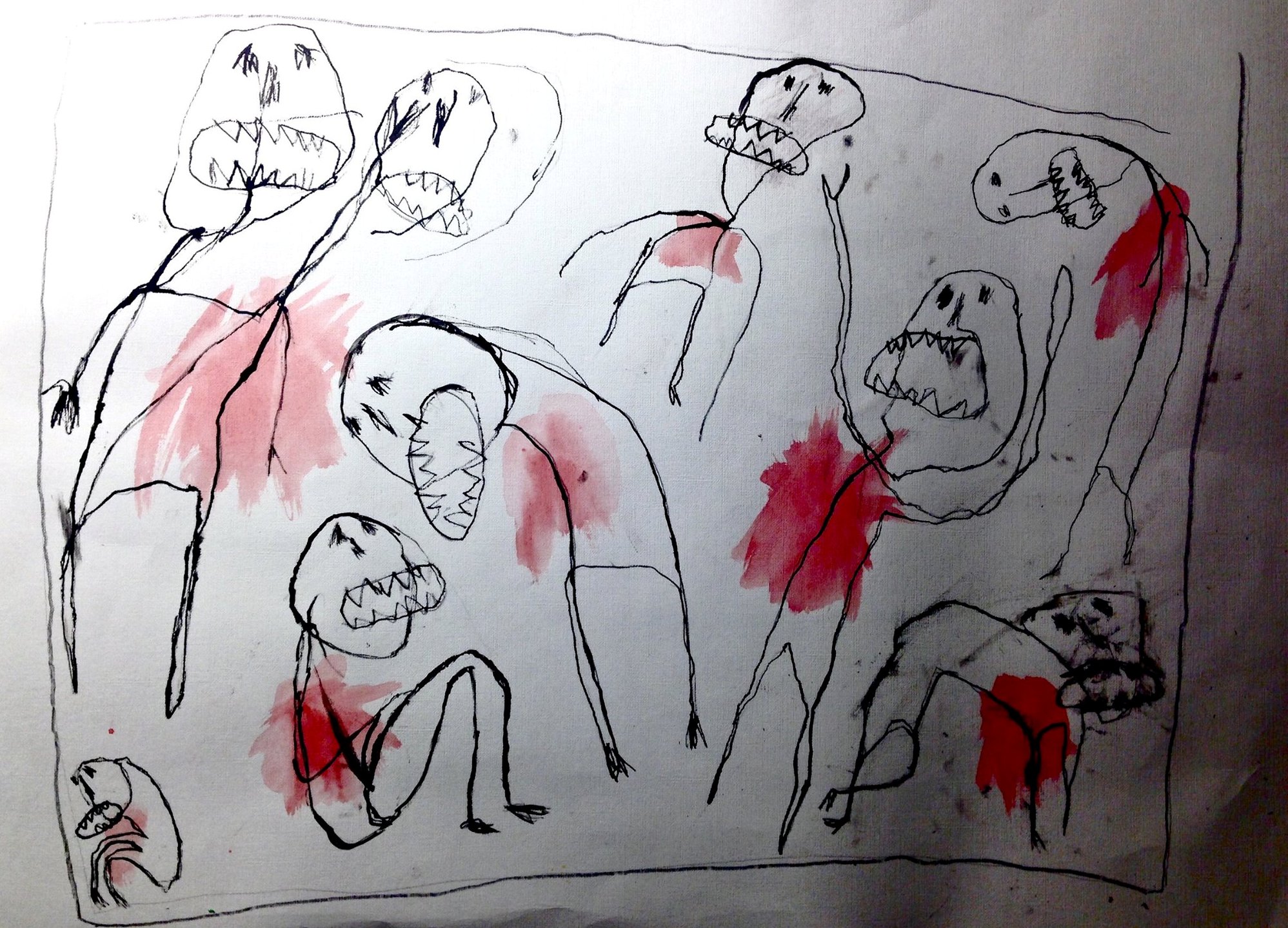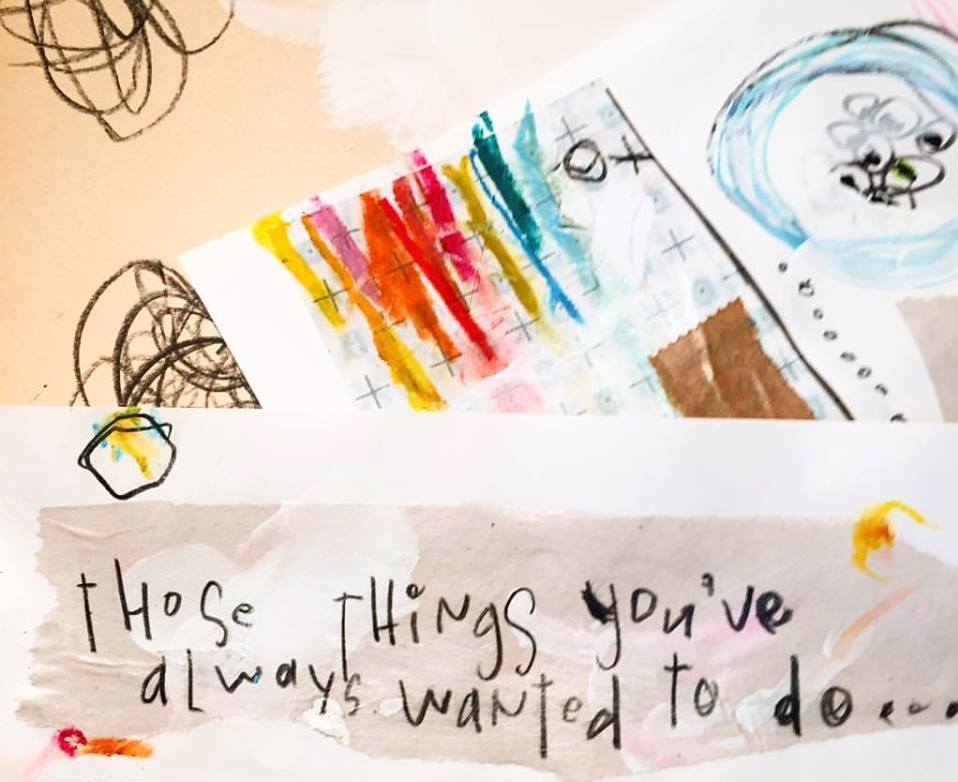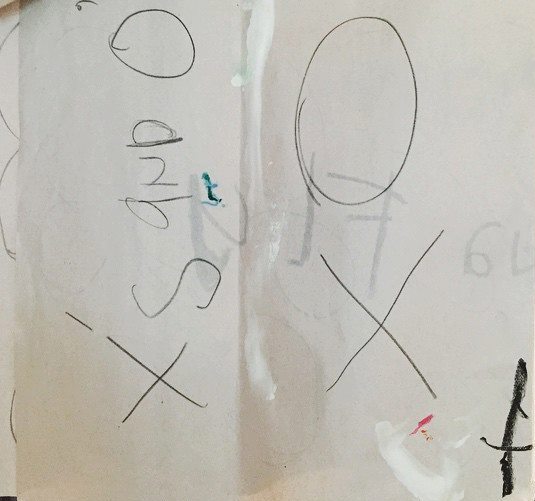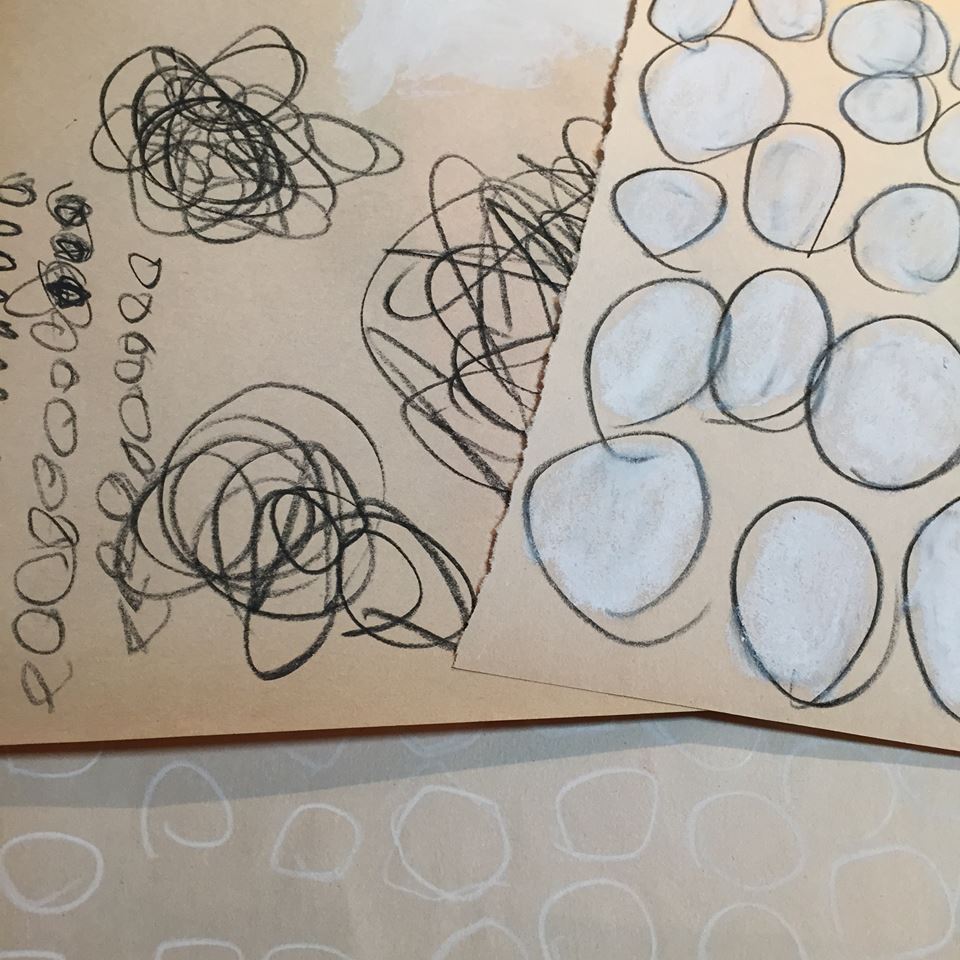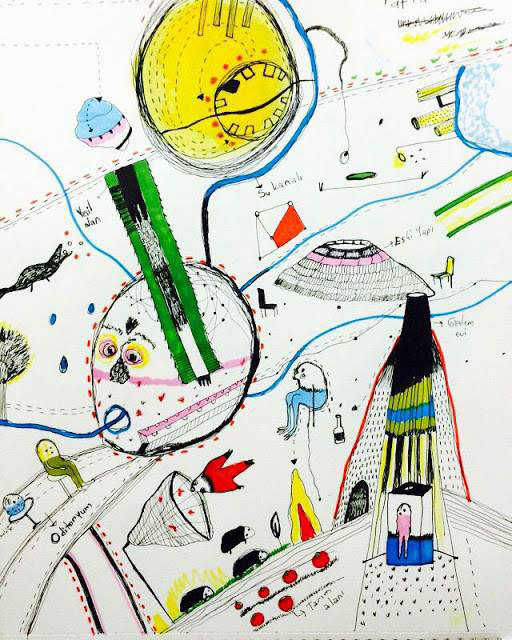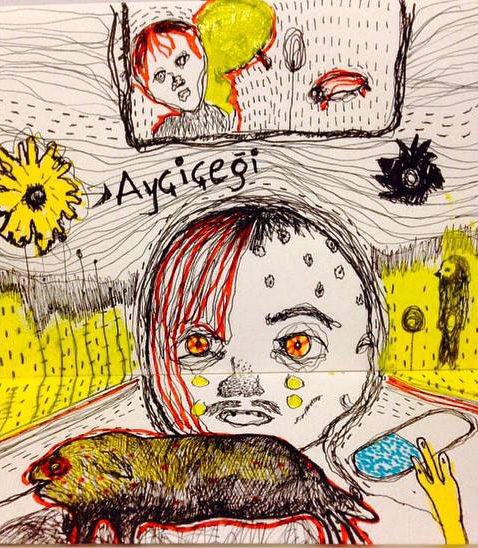Chris Taylor talks doodle
Doodles became interesting to me a few years ago, when I coauthored a paper on a large number of them made by Samuel Beckett in the manuscript of his play, “Endgame.” Most of those doodles we’re not especially exciting, but there were a handful that were intriguing for a variety of reasons. In describing some of what we called, “abandonments”, for example, I found we could have been describing elements of the play. The seemingly directionless building of these expansive doodles, which appeared to have no “endgame” themselves, echoed themes at the heart of the play. Others were reminiscent of works by visual artists (Picasso, Duchamp, and Giacometti, in particular) who shared some of the writer’s philosophical and aesthetic interests. While working on that paper didn’t lead me to anything like a general theory of doodles, I have begun to pay a lot more attention to them.
In the doodle show, like in Beckett’s manuscript, much of the doodling occurs around text. In Lucy Stevens’ work, images and hand writing stumble over and through each other, sometimes becoming indistinguishable. In Ron Shelton’s and Patricia Stacke-Kelly’s work, imagery appears to grow out of printed text, as if elaborating upon it. Many doodles, it seems, are very much at home around writing, like it’s their natural habitat. Maybe they are, in fact, more a form of hand writing than drawing?
Kelly’s and Shelton’s doodles, along with Lori Walters’, are probably the closest in this exhibit to what I think of as “pure” doodles, showing the aimless wanderings of a hand while the mind is thoroughly occupied elsewhere. Other works—Samuelle Richardson’s and Hatice Cicek’s, most notable—actually strike me more as very exciting, fast, fluid sketches than doodles. There appears to be some conscious reflection going on in them, suggesting that, at some point, maybe the doodler moved aside for a moment, and let the artist step in.
Each of the participating artists in the show gave their account on what a doodle means to them:
For myself, doodling comes from common restlessness. It’s a kind of fidgeting. A visual tuneless humming. It can be self-soothing. It can help with focus (if I’m using it as a kind of background activity while engaged in another activity that requires a different part of my brain and/or body–e.g., listening to a lecture). It is distinct from my sketches, which may be quick and casual, but nonetheless involve deliberation and purpose. Chris Taylor
five HAF artists talks about their doodle approach
Patricia Stacke-Kelly, Ireland: Doodling is something I do automatically when I’m on the phone or just sitting with a coffee. Always in lectures or conferences!! I use whatever medium I have to hand, often a ballpoint pen or pencil on a shopping receipt, paper bag, newspaper- whatever is nearby. If I’m in the studio I use whatever paints or recent materials I’ve been using and want to use up. For me, Doodling is a way to let unconscious thoughts surface, a way into another world. Meditative and reflective. I may work in notebooks or small pieces of paper in the studio, these often lead me into larger works and projects.
Hatice Çiçek, Turkey: Doodling is a time diffraction which takes place in the space of my mind. At each diffraction, new places and some living things which I’ve never seen exist. (We need some clue codes to explore each other) The arrow marks which go on schematically trigger the curiosity of the existences while increasing the dose of the sense of following. The sense of in-completion and the effect of diffraction and the remained spaces provide me with ideas for new imagery.
Lori Walters, USA: A doodle for me is an exploration of a moment in time. A permanent marker of that moment, whether I was thinking some particular thought, or thinking nothing at all, it is a mark of my being in that time and place; and that is very simple, and yet very profound, in the very same breath, that in that moment in time a mark was made. A mark, a doodle, never before seen, made by my hand. How fun is that?!
Ron Shelton, USA: My most notable doodles are created in the company of notes and messages. I have been collecting them for years now. What really identifies me to the doodle is the sub-consciousness manner in which they are laid. The moments specifically, when I am engaged in phone conversations are when the majority of my doodles are created: circles, geometric repetition patterns, usually rendered in ink. But lately, I have been keeping monolith and colored pencil on hand for accents and shading. If only I could be this free when I work on canvas with oils, I would be a better artist. But as it stands, the doodle is my forerunner, it is my muse, my guiding light.
Lucy Stevens, USA: Where do my doodles come from? I don’t know. Somewhere that has nothing to do with thought. They arise pure and surprising from, I guess, my, subconscious, that place of mystery and magic. They delight me, they perplex me, they show me who I am. I’m a self-taught artist from Rhode Island.
featured doodle: lucy stevens, USA “precise v-7 ” ballpoint on paper
Chris Taylor is an Ohio-based artist and a Senior Lecturer in the Dept of Art at the Ohio State University



